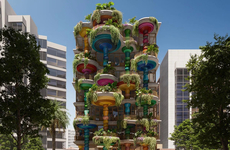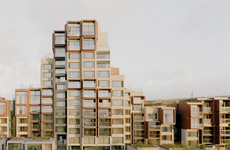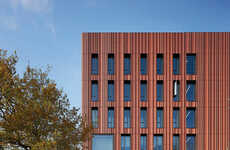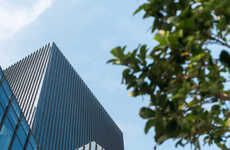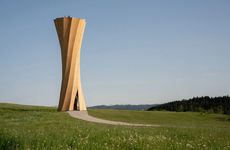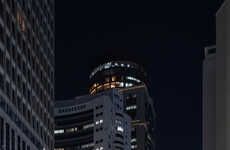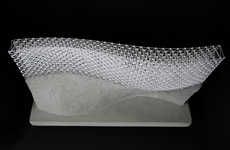
The Dr. Chau Chak Wing Building Resembles a Crumpled Paper Bag
Rahul Kalvapalle — February 4, 2015 — Art & Design
References: newsroom.uts.edu.au & gizmag
The Dr. Chau Chak Wing Building, part of the University of Technology Sydney's business school, is a curious looking building that looks like a paper bag being crumpled up. Australia's Governor General Sir Peter Cosgrove called it "the most beautiful squashed brown paper bag I've ever seen," and he's right on the money.
The building is named after the Chinese-Australian billionaire who contributed $25 million towards the costs of the building.
The building features a unique undulating facade that is sandstone colored. It is made from 320,000 handmade bricks each set at angles so tricky that they required one of Australia's master bricklayers to come out of retirement to complete the project.
In addition to its highly innovative design, the Dr. Chau Chak Wing Building also gets plaudits for being eco-friendly for its various green features including an air-conditioning system that senses the number of inhabitants in a room and adjusts settings accordingly.
The building is named after the Chinese-Australian billionaire who contributed $25 million towards the costs of the building.
The building features a unique undulating facade that is sandstone colored. It is made from 320,000 handmade bricks each set at angles so tricky that they required one of Australia's master bricklayers to come out of retirement to complete the project.
In addition to its highly innovative design, the Dr. Chau Chak Wing Building also gets plaudits for being eco-friendly for its various green features including an air-conditioning system that senses the number of inhabitants in a room and adjusts settings accordingly.
Trend Themes
1. Eco-friendly Architecture - The Dr. Chau Chak Wing Building showcases the potential for eco-friendly features integrated within avant-garde architectural designs.
2. Innovative Facade Designs - The building’s undulating sandstone-colored facade presents opportunities for architects and builders to experiment with unconventional aesthetics and materials.
3. Master Craftsmanship - The complex brick-laying techniques required for the building's facade suggest a potential demand for highly skilled tradespeople in construction and the preservation of historical buildings.
Industry Implications
1. Architecture - Architecture professionals can leverage innovative and sustainable concepts in their designs and highlight craftsmanship techniques in materials application as key areas of differentiation.
2. Construction - Construction companies can adopt sustainable building practices and invest in training craftsmen to optimize techniques in high-quality materials application.
3. Preservation of Historical Buildings - Preservation organizations can promote the value of skilled craftsmanship and encourage the use of innovative but respectful materials and designs in the maintenance of historic buildings.
1.2
Score
Popularity
Activity
Freshness


